Future Exhibitions is a thick and insightful yearly magazine dedicated to new forms of expression in the field of exhibition media. The theme of this year’s issue is Spatial Encounters. As the editors explain: We will focus on the visitor as we move from the content to the receptacle. What does space really mean? How can the totality of the visitor’s experience be enhanced by architecture, set design and technology? How does this influence the prerequisites for exhibition production?
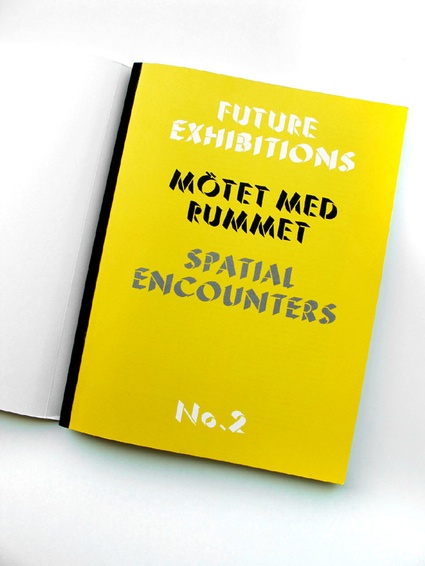
The magazine doesn’t provide clear-cut answers to the questions above but the contributors’ conversations with inspiring individuals and visits to innovative exhibitions spaces offer plenty of clues, ideas, pointers and stimuli to further cogitate on the theme of exhibition media.
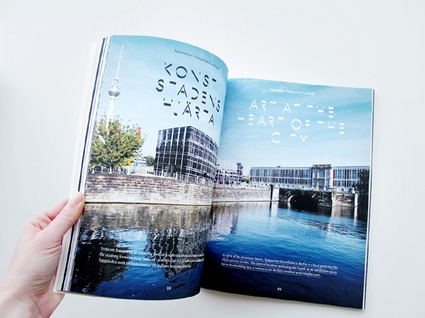
Three essays stand out from the magazine, they are written by people whose work i admire immensely: Rodney LaTourelle, Raqs Media Collective and Eduardo Navas.
LaTourelle, master in the art of creating mesmerizing spaces, lists and comments on exhibitions and spaces that challenge visitors’ expectations and engage their senses and attention. The strategies adopted range from the subtle to the spectacular. Some curators chose to play with the atmospheric qualities of light, others subvert the sequence of space and artefacts (by having visitors wear rubber boots and have them experience physically the consequence of climate change or by inverting the service entrance and the monumental one to make the audience experience the volumes of the space in a different way), etc. I found LaTourelle’s essay particularly interesting as he looked for innovation in the geography and the atmosphere of the exhibition space rather than in technology.
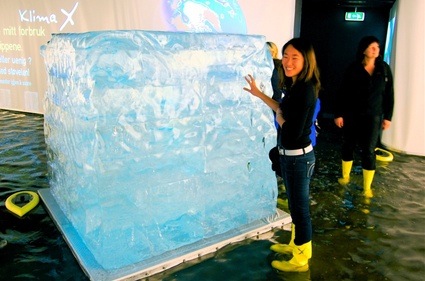 Klima X at the Norwegian Museum of Science & Technology in Oslo (photo)
Klima X at the Norwegian Museum of Science & Technology in Oslo (photo)
Future Exhibitions asked the ever ingenious Raqs Media Collective to present a fictive future exhibition. They came up with Eccentric Orbits – The Biennale of Solar Systems. After all, the galactic space might very well be the only place devoid of any art biennale.
In his essay Exhibitions in spaces of flux, Eduardo Navas draws on its own experience and on interviews with the likes of Mark Garrett from HTTP gallery, Sean Dockray from TELIC and the Public School, artist and curator Gustavo Romano and Marco Garcia from Medialab Prado to explore the opportunities offered by ‘interactivity’ in all its guises.
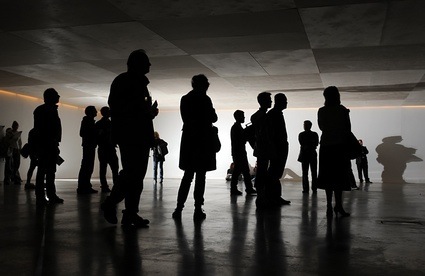 “Zeigen”, Temporäre Kunsthalle © Benjamin Pritzkuleit
“Zeigen”, Temporäre Kunsthalle © Benjamin Pritzkuleit
Another key features of Future Exhibitions is the spotlight on cultural institutions they regard as “ahead of the rest”: Laboral in Gijón, the Powerhouse Museum in Sydney, Miraikan aka The National Museum of Emerging Science and Innovation in Tokyo and Temporäre Kusthalle in Berlin.
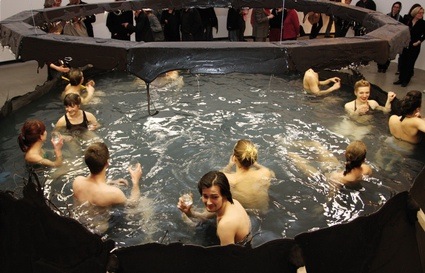 Salon des amateurs © Jerszy Seymour Studio
Salon des amateurs © Jerszy Seymour Studio
Finally, the magazine interviews 4 ‘oracles’ or ‘people worth listening to’. They are: Lebanon NGO Febrik who organizes art and design workshops for children living in refugee camps in the Middle East; Carina Ostenfeldt whose educational project All aboard – the Salutogenic museum in Stockholm ensures that children with any kind of functional challenge can enjoy the educational experience provided by the space; stage designer and artist Robert Wilson; and Patrik Schumacher, partner at Zaha Hadid Architects, who explains why, in his view, parametricism is the preeminent style for avant-garde architecture and urbanism practice.
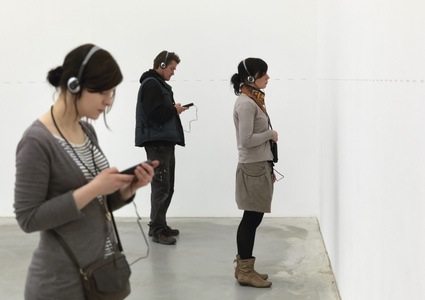 “Zeigen”,Temporäre Kunsthalle © Benjamin Pritzkuleit
“Zeigen”,Temporäre Kunsthalle © Benjamin Pritzkuleit
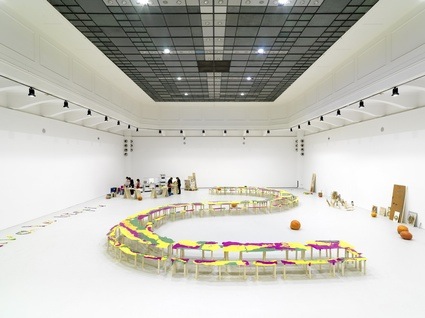 MAK, Vienna © Jerszy Seymour Studio
MAK, Vienna © Jerszy Seymour Studio
This way to order the mag.
Review of the first issue of Future Exhibitions.
